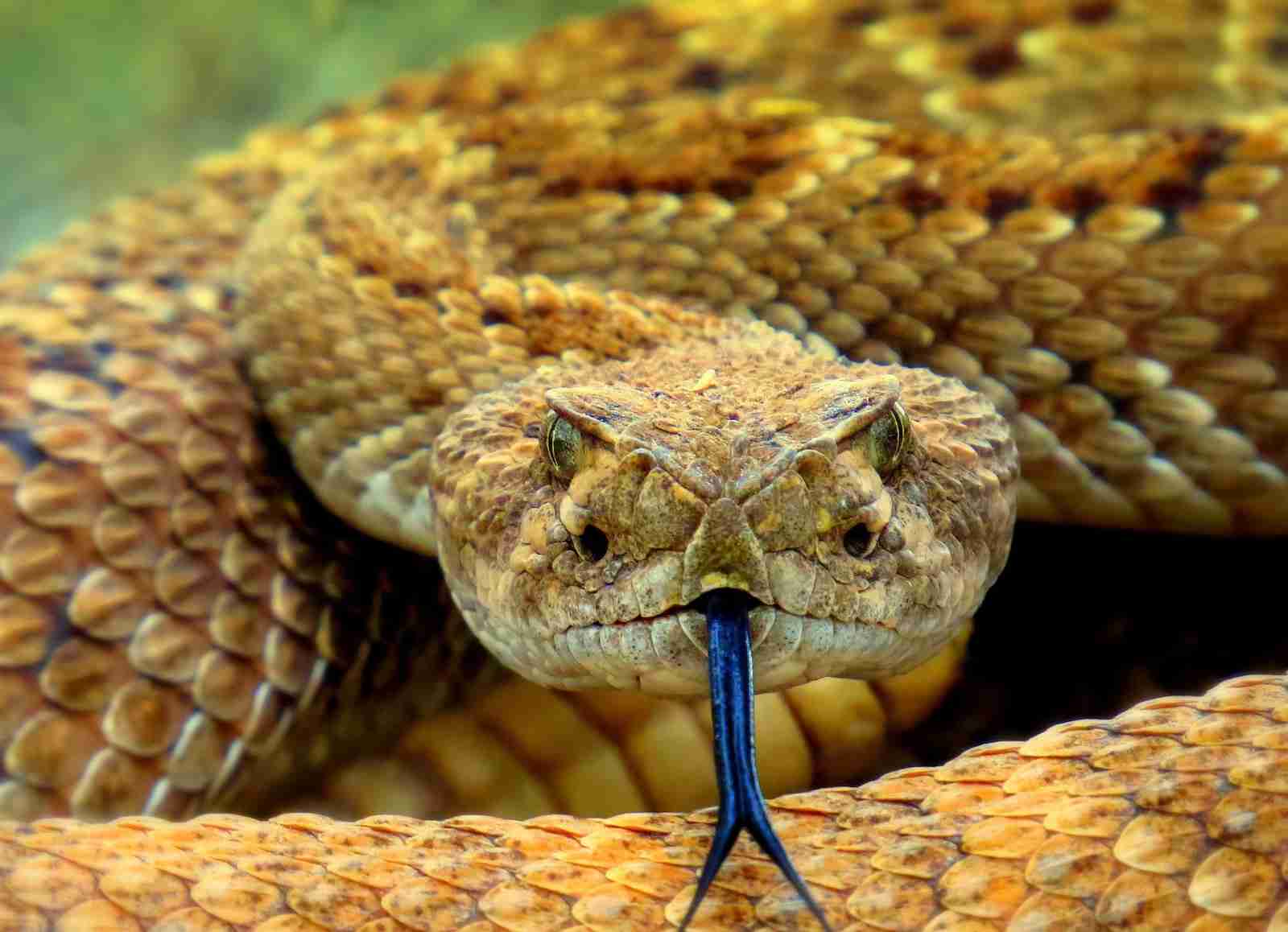25 Fun Facts About Snakes | Know Beyond the Hiss
1. Snakes are elongated, legless reptiles belonging to the suborder Serpentes.
Snakes are amazing creatures, long and without any legs, falling under the Serpentes suborder.
With over 3,000 distinct species, their variety is impressive, ranging from small garden snakes to giant pythons.
2. Some sea snakes can breathe partially through their skin.
Nature has its wonders. Some sea snakes possess the extraordinary capability to breathe, at least partially, through their skin.
This trait allows them to remain submerged for longer durations. While humans depend mainly on their lungs, these snakes have a unique advantage in the watery depths.
3. Viking leader Ragnar Lothbrok met his end in a pit filled with snakes.
Ragnar Lothbrok, the famed Viking leader, met an unforgettable end. Far from the battlefield, he faced a pit teeming with serpents.
In this chilling arena, surrounded by venomous foes, his legacy is sealed in a tale as dramatic as his life’s exploits
4. Boa constrictors give live birth, whereas most snakes lay eggs.
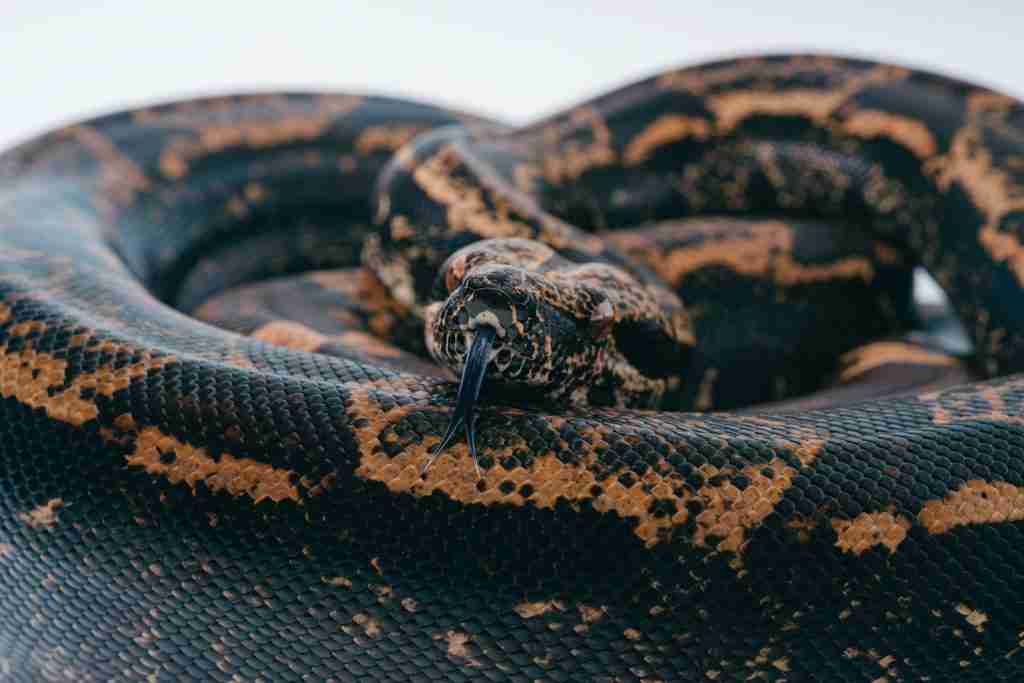
The way snakes bring their young into the world varies. While many snakes lay eggs, the boa constrictor is different.
This snake surprises many by giving live birth. It’s like the exception to the rule in the snake world, making it even more intriguing.
5. The flying snake doesn’t fly it glides between trees.
Don’t be fooled by the name flying snake. These snakes don’t take to the skies like birds. Instead, they have a special ability to glide gracefully between trees.
It’s nature’s version of a mid-air dance without wings.
6. Titanoboa, an extinct species, was the largest snake ever, reaching 50 feet.
History has its fair share of giants, and snakes are no exception. The Titanoboa, now extinct, was an incredible sight, stretching up to 50 feet in length.
Imagine a snake as long as a bus, ruling the ancient wetlands with its sheer size.
7. Snakes regenerate their skin as they get older.
As snakes grow, their skin doesn’t just stretch it sheds completely. This process of regeneration allows them to remove old, worn-out skin and replace it with a fresh layer.
It’s like nature’s way of giving them a new outfit as they age.
8. Snakes have internal ears but lack external ones.
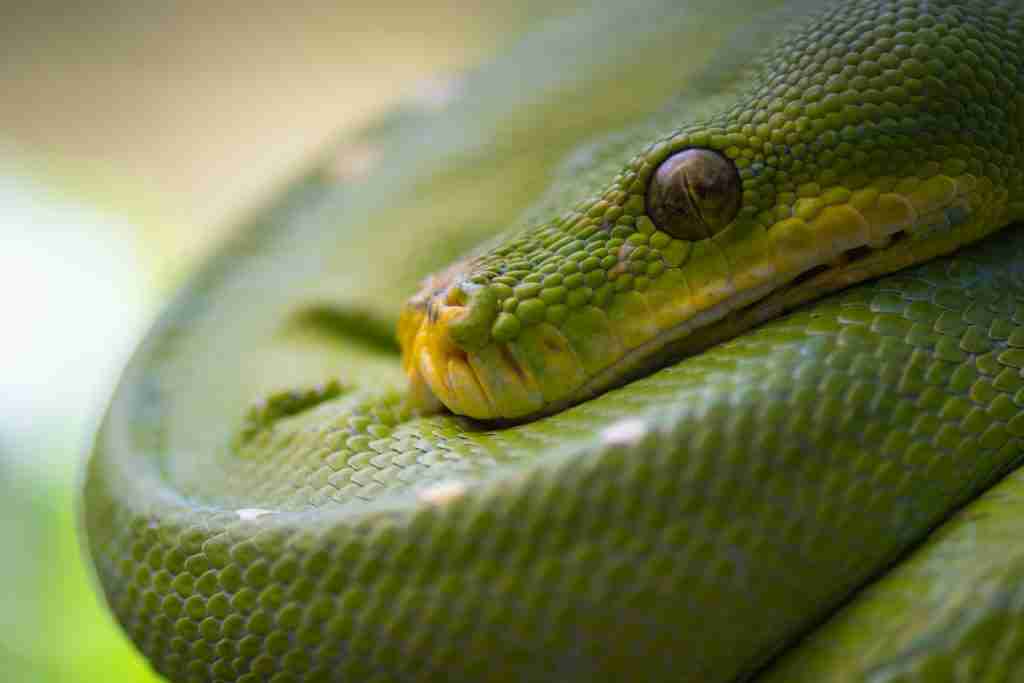
Ever noticed that snakes don’t have outer ears? Yet, they’re not deaf. Snakes possess internal ears and, interestingly, they hear through vibrations.
These vibrations are sensed through their jawbones, helping them detect what’s happening in their surroundings. It’s a unique listening experience.
9. One of the fun facts about Snakes is that the green anaconda is the heaviest snake species in the world.
The green anaconda is truly a marvel in the reptile domain. Weighing up to 550 pounds, it proudly holds the title of the heaviest snake worldwide.
These giants can stretch over 30 feet and boast a girth similar to a human’s waist. Residing mainly near water, their colossal size is nothing short of awe-inspiring.
10. A snake’s skin isn’t slimy it’s dry and smooth.
Contrary to popular belief, a snake’s skin isn’t wet or slimy at all. If you ever get a chance to touch one, you’d find their skin surprisingly dry.
It’s smooth to the touch, a testament to their adaptability and unique design in the animal kingdom.
11. The decapitated head of a snake can still bite hours after death.
Snakes have a startling survival reflex even in death. The decapitated head of a snake can still bite, a defense mechanism that lasts hours after its demise.
For instance, there have been reports of snakeheads reacting and biting up to an hour after being severed.
12. Snakes can’t chew they digest their food whole.
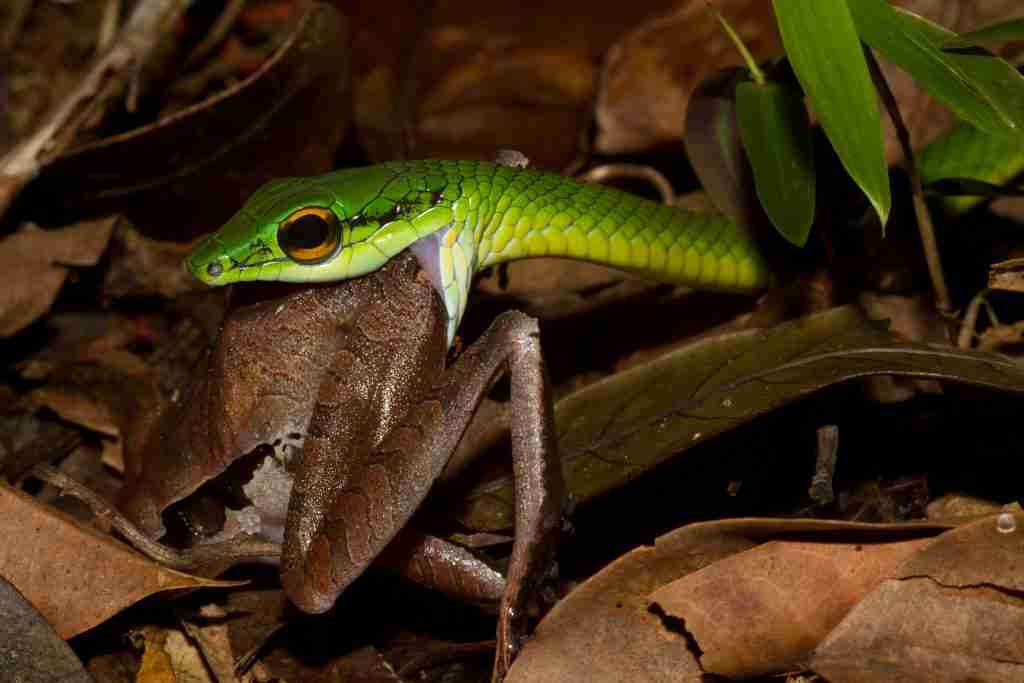
Eating snakes is quite different for us. They can’t chew. Instead, they swallow their prey whole.
Imagine a python engulfing a whole rat or a bird without breaking it down first. Their digestive systems then take over, processing the entire meal.
13. Snakes shed their skin multiple times a year.
Snakes undergo an intriguing process called molting. They shed their skin three to four times a year, but it’s not just for show.
This shedding helps them remove parasites and dirt, allows for growth, and gives them a fresh layer of skin.
So, every time a snake sheds, it’s like it’s renewing itself, ensuring it remains healthy and agile in its environment.
14. snakes give birth to live young, but they don’t nurture them.
Motherhood in the snake world is quite hands-off. While some snakes do give birth to live young, there’s no coddling afterward. Once the babies are born, they’re on their own.
Baby snakes are left to fend for themselves from the moment they enter the world. Imagine little snakelets, navigating life without any parental guidance from day one.
15. snakes can live up to 20-30 years in captivity.
Think snakes have short lifespans? Think again. When cared for in captivity, away from natural predators and dangers, snakes can live impressively long lives, ranging from 20 to 30 years. It’s a testament to how proper care can extend their years.
16. Many snake species have a third called the parietal eye.
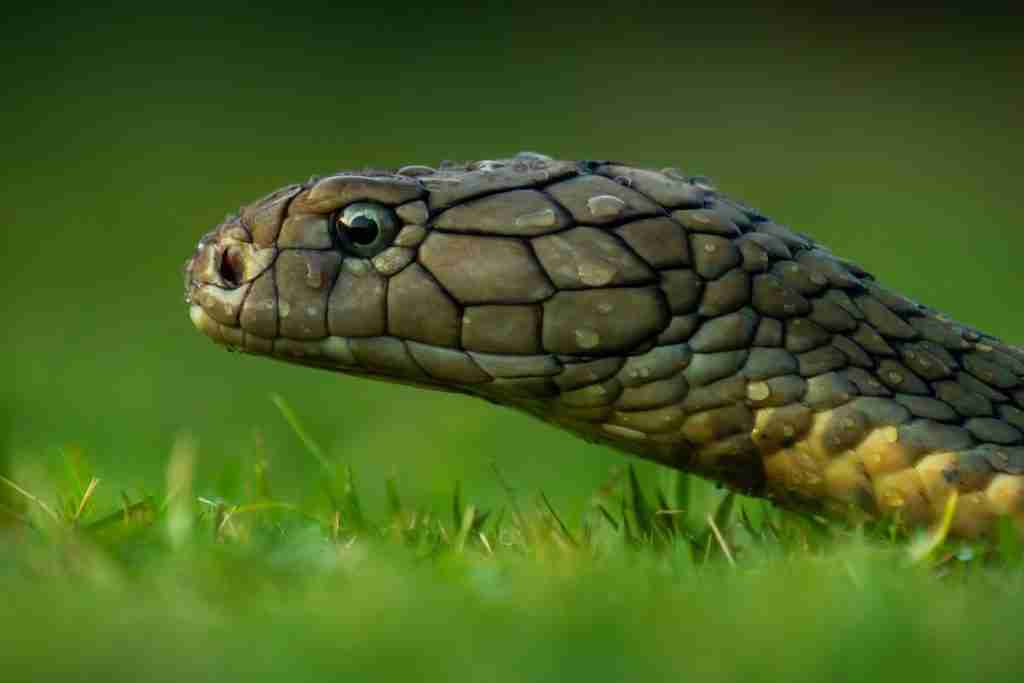
Snakes have a hidden surprise on their heads. Beyond their two main eyes, many species boast a third eye not for mystical visions, but a light-sensitive scale named the parietal eye.
It helps them sense changes in light, giving them an added layer of environmental awareness. Quite a cool feature.
17. The Iberian grass snake can play dead when threatened.
The Iberian grass snake has a unique defense mechanism. When threatened, it can feign death in an act called tonic immobility or playing dead.
To make it convincing, the snake rolls onto its back, hangs its mouth open, and emits a foul smell.
This act often deters predators, as they typically prefer live prey over a seemingly deceased one. It’s a clever ruse to avoid danger.
18. The spitting cobra can spit venom accurately up to 6.5 feet away.
The spitting cobra isn’t just named for the show. Armed with a specialized venom delivery method, this snake can eject venom with remarkable accuracy, targeting threats up to 6.5 feet away.
It’s a precise and effective way to deter potential threats without getting too close.
19. Some snakes have heat-sensing pits to detect warm-blooded prey.
Nature has equipped certain snakes with an incredible hunting tool. These snakes have heat-sensing pits, usually located between their eyes and nostrils.
These pits allow them to detect the warmth emitted by their prey, like a built-in thermal camera. This comes in handy, especially at night, helping them zero in on warm-blooded animals.
20. The fear of snakes is commonly called ophidiophobia.
Snakes often evoke strong emotions in humans, and for many, it’s fear. This widespread fear has the name ophidiophobia.
If just the thought of a snake makes your heart race, you’re not alone. It’s one of the most common phobias people have.
21. Snakes have weak eyesight and are colorblind.
When it comes to vision, snakes aren’t winning any awards. Most of them possess relatively weak eyesight, and they can’t see colors as we do.
Instead of a vibrant world, they likely see things in shades of grey, navigating their environment differently than creatures with sharper vision.
22. Snakes can see in the dark using infrared vision.
Beware of snakes’ deceptive daytime sight. Many snakes have a nighttime advantage. They utilize infrared vision, enabling them to detect heat and see in the dark.
It’s like they have night-vision goggles built right into their eyes, helping them hunt and navigate when the sun goes down.
23. The mussurana snake is known to eat other snakes.
Nature has its unique food chains, and the mussurana snake is a perfect example.
This particular reptile has a peculiar diet preference it feasts on fellow snakes, It’s like the lion of the snake world, preying on its kind to survive.
24. Snakes have more than one way to deliver venom.
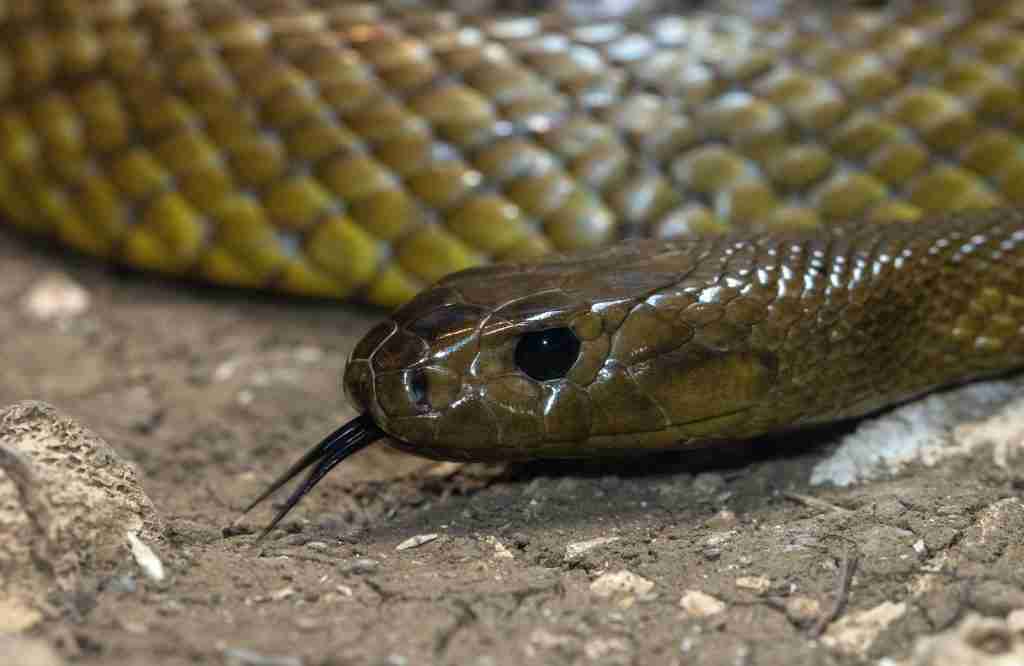
Think a snake’s bite is its only venom trick? Think again. While many snakes do inject venom through fangs, others, like the spitting cobra, can spray it.
Some even release venom through their skin. It’s a diverse toolkit, ensuring they’re always ready for defense or hunting.
25. A snake can detect a prey’s heartbeat.
Snakes are incredibly tuned-in hunters. Some, especially constrictors, can even detect a prey’s heartbeat. By sensing these minute vibrations, they can adjust the pressure of their coils which is one of the fun facts about Snakes.
This ensures they exert just the right amount of force to immobilize or kill their prey efficiently. It’s a delicate dance of life and death, all guided by a heartbeat.
FAQs
Brazil leads the world when it comes to snake diversity, hosting more than 375 distinct species. While many of these snakes are harmless, some pose a threat. Thanks to Brazil encompassing 60% of the South American rainforest, this vast natural habitat acts as a perfect sanctuary for the thriving snake population.
Snakes have a diverse diet that varies based on their species, size, and habitat. Many prefer small mammals such as rats and mice, while others target birds, either on the ground or occasionally in flight. Aquatic snakes might opt for frogs, toads, and fish. Some smaller snakes feast on insects, and certain species, like the king snake, even consume other reptiles. Whether using venom or constriction, snakes typically swallow their prey whole.
The Black Mamba is often recognized as the fastest snake on Earth. Native to parts of Africa, it can reach speeds of up to 12 to 14 mph (19 to 23 km/h) in short bursts when threatened or pursuing prey. This impressive speed, combined with its potent venom, makes the Black Mamba one of the most formidable snakes in the world.
The bite of the Inland Taipan, also known as the fierce snake, is often considered among the most painful due to its highly toxic venom. This venom contains potent neurotoxins and other compounds causing rapid and severe symptoms. Despite its potency, the snake is shy, and fatalities are rare, thanks to available antivenom and its remote habitat.
The saw-scaled viper (Echis carinatus) is believed to be responsible for more human deaths than any other snake. While it may not possess the most potent venom, its widespread distribution in populated areas, aggressive nature, and frequency of human encounters make it particularly dangerous.
Snakes sleep differently than mammals. They lack eyelids, so their eyes remain open during rest. Instead, they enter a torpor state, a deep rest similar to sleep. Their sleep patterns are influenced by external factors like temperature and light. Typically, they choose sheltered spots to rest, maintaining body temperature and safety.

